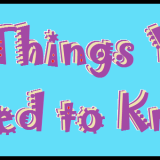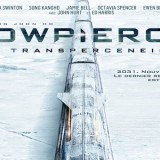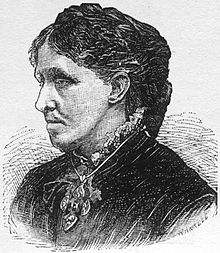Behind the Keyboard: Please Mind the Gap
Welcome back to Behind the Keyboard! This was supposed to be a weekly column but alas, exams got in the way. But we’re back! And in good time too because NaNoWriMo is coming up. Are you doing it this year? Let me know below.
I’ve tried to complete NaNo several times but i’ve never actually succeeded – not that it’s an easy thing to do of course, but far from impossible – and I began to wonder why. I wrote 10,000 words one year and then 24,000 words the next, but I noticed one thing: they all began to tail off towards the end. All the padding became more and more obvious as I read on and evidently I’d finished the ‘beginning’ (or Act 1) but I didn’t know where to go from there but I did know how I wanted to end. And then it all clicked: there was no middle. I like to picture this as a massive error 404 in between Chapter 7 and Chapter 21.
This year however, I really want to reach that 50k goal, but how? Evidently, the chasm in the middle of my plot must have something to do with it, but one must have enough material to fill this gaping hole first in order to reach the other side, where it’s greener and everything comes together. The middle of a novel should be where the tensions rise, the stakes increase and the reader becomes more and more hooked. The middle is the filling of the pie, so to speak, so here are a few ideas to help you flesh out the middle in NaNo:
– Index card method: write down all your scene ideas and put them on index cards and arrange them into a plot from there, adding/removing cards as necessary
– Thread charts: write down all your subplots on one side and chapters on the other, so you can see what happens in regards to each subplot in each chapter so you make sure you’re covering enough and you haven’t forgotten about that plot thread you started in chapter six.
(Only use the following methods in methods in emergencies day 26 of NaNo when you’ve still got 10k to go but the story has finished):
– Kill a character (or make said character a vampire)
– Throw in a love interest
– Have the character have a near death experience
– Insert any life changing event here.
Of course, if you are going to kill a character or something, make sure it fits into the plot. An alien abduction wouldn’t make sense in your average YA romance novel. Most importantly, have fun! NaNo is supposed to be exciting, whether it be because you chased a crazy subplot idea that you wouldn’t normally go after or the thrill of racing against time to finish that novel. After all, it is your novel and you should have fun with it! The madness of it all is what NaNo is all about.
~11 days till NaNo!
– Blues.










Hah! Vampires, lol.
I find that I often have this very problem when writing. I’ve found that, if you just write everything, random scenes and ideas and such and such, you can tend to get a little lost.
Make sure these things are going to happen SOMEWHERES (it doesn’t matter where, in first drafts or in one-month novel projects)
1. Subplots are established and carried. (Don’t “dump” them unless they don’t work.) Romance, training, the discovery of a 5-month old pickle jar in the fridge, whatever.
2. Complications. Things must be getting progressively more difficult for the protagonist. And it shouldn’t just be stuff thrown in at random. These obstacles need to be tied to the plot/goal of the protagonist, otherwise it’s just kinetic eye-candy that serves very little purpose.
3. The Mentor. i.e. Yoda. Usually act two is where the person who will guide the protagonist towards reaching his goal is introduced. If he’s introduced beforehand, then this is where he steps into the limelight. Think any karate/kung fu movie ever.
4. The “tempation.” This is what Campbell used to describe the second biggest obstacle the hero must face. Usually he overcomes this. Now note that this isn’t the main problem, this is a distraction that threatens to pull the hero away from his main goal.
5. False triumph. We’ve all seen this. A taste of victory that makes us think, “wait a minute, they haven’t one yet, the movie’s only half over!” This is why it’s called a FALSE triumph.
6. Reversal. That’s the moment where we all find out that the false triumph, was, well, false. The bad guys look like they’re going to win now. The hero’s hit the bottom of the bucket. It’s his darkest moment. Somehow he’s going to find the motivation to go to act three, but right now he’s wallowing in a black hole of self-pity and/or despair. Good luck Rocky!
Those six elements are really what define act two. If you get stuck, think about where each of those things is fitting into your story. The most important thing is, of course, to keep writing.
10-4
~ED